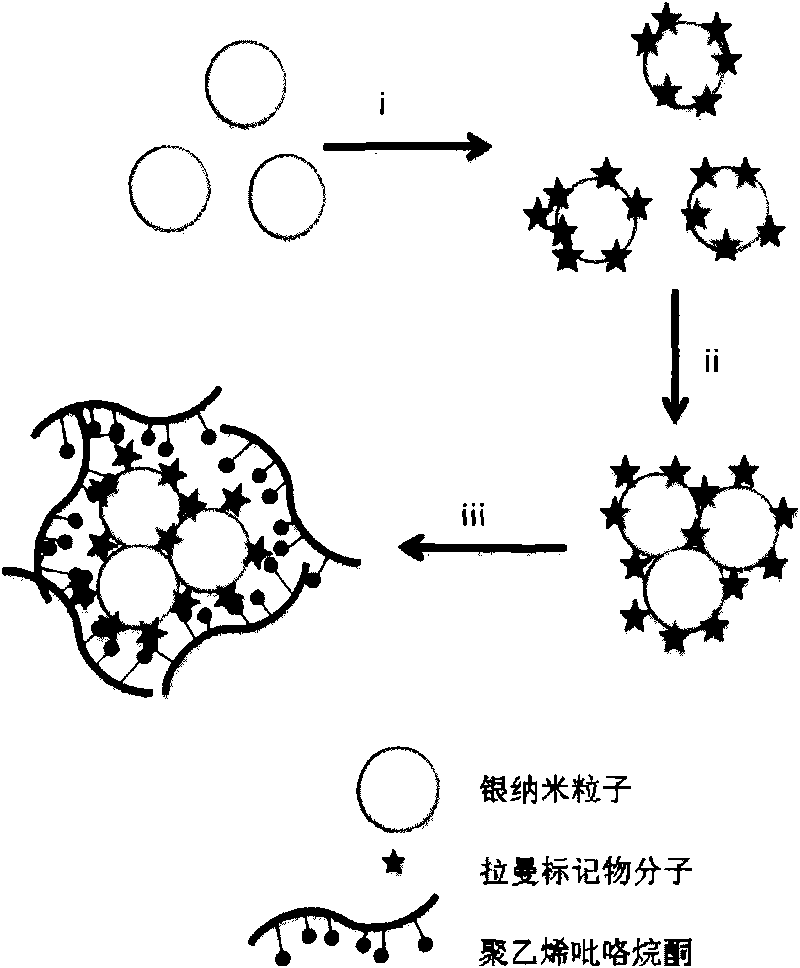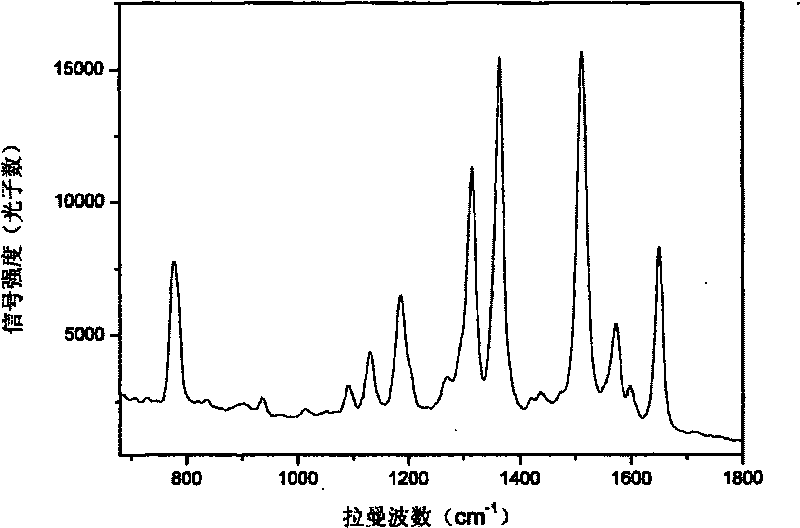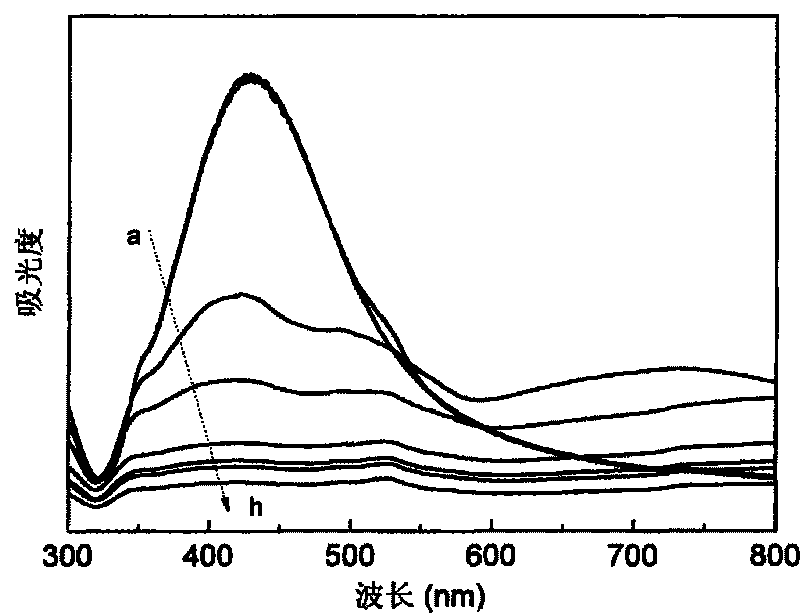Preparation method of surface-enhanced Raman scattering probe
A surface-enhanced Raman and probe technology, which is applied in the field of preparation of aggregated silver nanoprobes, can solve problems such as precipitation and unstable clusters, and achieve the effects of environmental friendliness, good repeatability, and low toxicity
- Summary
- Abstract
- Description
- Claims
- Application Information
AI Technical Summary
Problems solved by technology
Method used
Image
Examples
Embodiment 1
[0017] Embodiment 1 probe preparation (taking rhodamine 6G probe as an example)
[0018] In the first step, the silver colloid solution was prepared by the method reported by Lee and Meisel. will be 1.0×10 -2 Add the silver nitrate solution to the silver colloid solution in a volume ratio of 1:10 into deionized water, stir and heat to boiling. Add 1% sodium citrate solution into the boiling silver nitrate solution at a volume ratio of 1:50 to the silver colloid solution, keep stirring and heat to boil for 40 minutes to obtain the silver colloid solution. The prepared silver colloidal solution was protected from light and sealed for future use.
[0019] The second step is to prepare 1 mM rhodamine 6G aqueous solution, take the rhodamine 6G solution and add it to the silver colloid solution at a volume ratio of 1:1000-1:100 to the silver colloid solution under magnetic stirring, and react for 5 minutes. Add 0.5M sodium chloride solution to the mixed solution of rhodamine 6G a...
Embodiment 2
[0020] The chemical stability detection of embodiment two probe (taking rhodamine 6G probe as example)
[0021] The first step is to do a group of comparative experiments on the stability of the absorption spectrum. The first group first prepares a 1mM rhodamine 6G aqueous solution, takes the rhodamine 6G solution and adds it to the silver colloid solution at a volume ratio of 1:500 to the silver colloid solution under magnetic stirring. React for 5 minutes. Then add a concentration of 0.5M sodium chloride solution according to the volume ratio of the silver colloid solution of 1:750; the second group adds 1% PVP aqueous solution with a molecular weight of 50,000 according to the volume ratio of the silver colloid solution of 1:150 on the basis of the first group. The absorption spectra of the solutions of the first group and the second group were recorded with time. It can be known from the change of the absorption spectrum intensity that if there is no protection of PVP, su...
Embodiment 3
[0023] Example 3 The SERS activity of the probe in living cells and the biocompatibility of the probe (the SERS activity in living cells is exemplified by the 4-mercaptobenzoic acid probe, and the cell survival rate is exemplified by the rhodamine 6G probe). The first step Cervical cancer cells (Hela) were cultured in culture medium (37°C, 5% CO 2 ). After 24 hours, add the 4-mercaptobenzoic acid SERS probe solution (the preparation method is the same as that of the rhodamine 6G probe solution) into the cell culture medium in a volume ratio (3:1), shake it gently, and put it back in the incubator Inside. The SERS probe enters the interior of the cell by being phagocytized by the cell. After 1.5 hours, the culture medium was aspirated, and the cells were washed 3 times with phosphate buffered saline (PBS) to remove the SERS probes that were not phagocytized by the cells and remained in the culture medium for use.
[0024]In the second step, the cells washed with the buffer s...
PUM
| Property | Measurement | Unit |
|---|---|---|
| Concentration | aaaaa | aaaaa |
Abstract
Description
Claims
Application Information
 Login to View More
Login to View More - R&D
- Intellectual Property
- Life Sciences
- Materials
- Tech Scout
- Unparalleled Data Quality
- Higher Quality Content
- 60% Fewer Hallucinations
Browse by: Latest US Patents, China's latest patents, Technical Efficacy Thesaurus, Application Domain, Technology Topic, Popular Technical Reports.
© 2025 PatSnap. All rights reserved.Legal|Privacy policy|Modern Slavery Act Transparency Statement|Sitemap|About US| Contact US: help@patsnap.com



